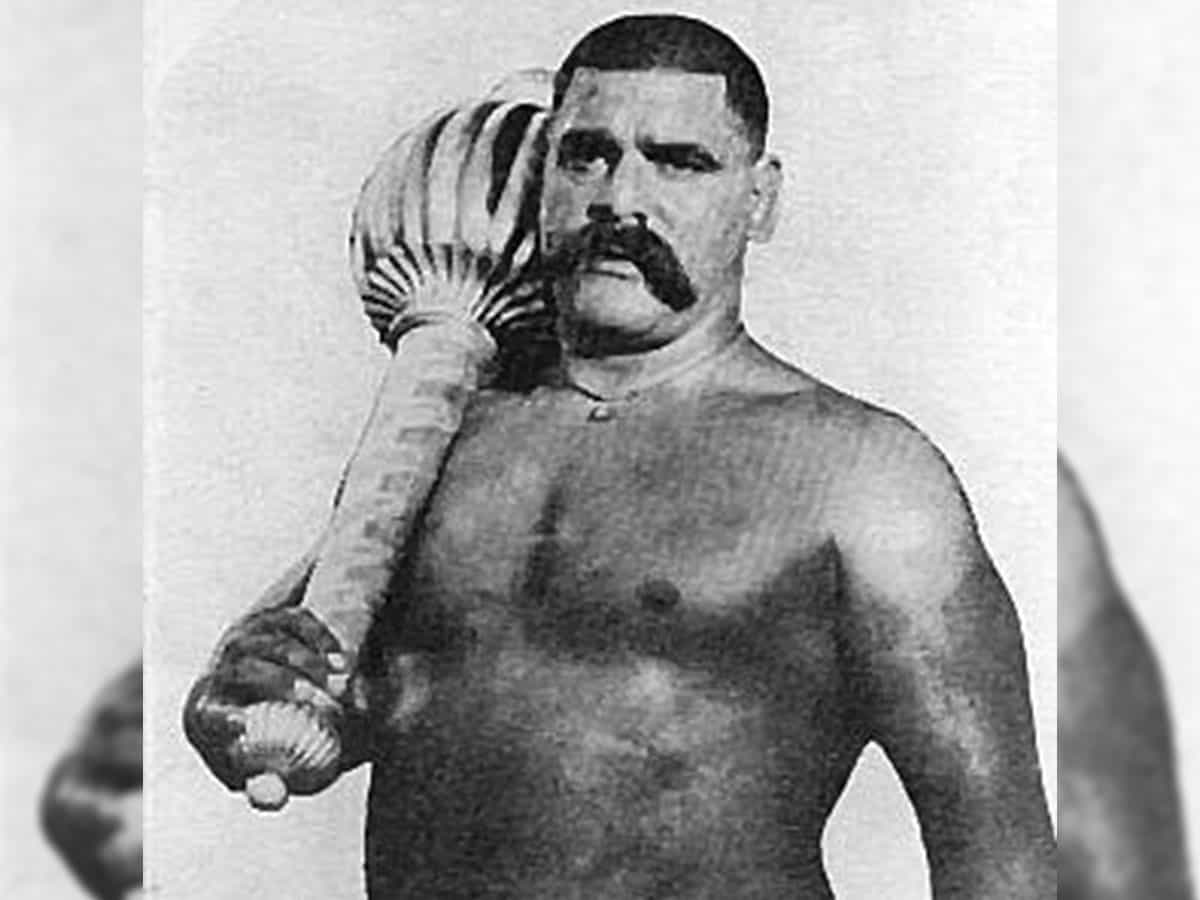
The strength and skill displayed by Vinesh Phogat in the wrestling competitions of the Paris Olympics recently brought back memories of India’s famous wrestlers of the past who used to defeat their rivals from other nations. Although the form of wrestling that they were involved in was different from the Olympic style wrestling that we saw in Paris, the basic principles of the sport were the same.
The most famous Indian wrestler of the past was Ghulam Mohammad Baksh Butt, better known by his ringside name of The Great Gama. He belonged to a Kashmiri family that was settled in Jabbowal village in Amritsar district in Punjab. According to reports, in a wrestling career of 52 years he remained undefeated.
When he was at his peak he won the title of Rustom-e-Hind. In 1910 he became the World Heavyweight Champion and was considered to be one of the greatest wrestlers of all time.
Even before he entered his teens, he defeated some of the top wrestlers of India at a competition organised by Raja of Jodhpur. In the early 1900s, he won wrestling competitions across India as the champion wrestler of Datia State (now in Madhya Pradesh). Almost every Indian has heard of Gama’s wrestling feats but rarely do we appreciate his contribution to the freedom struggle.
Freedom movement needed a hero
His rise to fame coincided with the upsurge of the nationalist movement and the demand for freedom from British rule. Leaders like Maulana Azad, Lala Lajpat Rai, Bipin Chandra Pal, Bal Gangadhar Tilak, and others were challenging the myth of the physical superiority of the white rulers. India desperately needed a hero who could prove that Indians were better than the Englishmen and Europeans in strength and stamina. Gama provided the face that they badly wanted.
Sarat Mitra, a rich Bengali businessman, took Gama, his brother Imam Baksh, and Ahmed Baksh to London in 1910. Mitra wanted to prove that Indian athletes were in no way inferior to the Europeans. Gama was the right choice to achieve this objective. An open challenge was advertised in newspapers and magazines to any person from Europe to fight with Gama.
First bout with Zbyszko
In September 1910, Gama clashed with Stanislaus Zbyszko, the reigning World Champion from Poland, in front of 12,000 people in London. Zbyszko was the toughest opponent that Gama had faced till then but even the Polish wrestler could not stop the rampaging Gama. The Times (London) reported that thrice Zbyszko tried his best to attack but failed to break Gama’s defence.
Making no headway, Zbyszko adopted defensive tactics and crouched down on the ground. After two and a half hours, the match was called off due to fading light. The media lambasted Zbyszko for being afraid and a rematch was scheduled for next Saturday.
Zbyszko runs away from rematch
That day Gama kept waiting but his opponent failed to show up. Zbyszko had fled from London and Gama was declared a winner. This victory restored Indian pride in all hearts. The Indian nationalist press presented the victory as a triumph of Indians over the Westerners.
Hailed as a national hero
When Gama returned to India, he was hailed as a national hero. He was invited to the Indian National Congress Session at Allahabad. In 1928, the Maharaja of Patiala arranged another match for Gama against Zbyszko, this time in Patiala.
The Maharaja arranged for a new stadium to be constructed which had a capacity of accommodating 40,000 spectators. Many of the leading political figures and celebrities turned up to watch the bout. It was like a bout between Muhammad Ali and Joe Frazier in the 1970s. The contest was again billed as India versus the West.
Shortest bout in history
But it turned out to be one of the shortest wrestling matches in history. Gama smashed through Zbyszko’s defence and hurled him to the ground in less than a minute. The spectators went into raptures and cries of “Jai Hind” reverberated around the stadium.
Prof. Joseph S. Alter of the University of Pittsburgh in the USA, who has done considerable research into the political ramifications of Gama’s achievements, has written that as a national hero, Gama represented the Freedom Struggle and the aspirations of the people of India as much as any political leader of that period. He embodied the strength and courage that was essential to the Indian freedom movement at that time.



